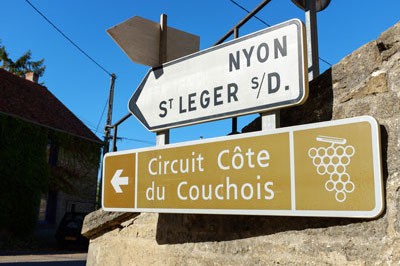The turn of the new millennium was a special time for many reasons, but in particular it marked an important event in the Couchois region, just to the south of Maranges, in mid-Burgundy. For here it was that a new Appellation was born—the Bourgogne Côte du Couchois. It nestles on the left flank of the Côte Chalonnaise, 14 kilometers west of Mercurey, the largest town and the best-known appellation of the Côte Chalonnaise (indeed, it makes up two out of three bottles of Côte Chalonnaise red). Six communes produce Couchois wines which, although not as well-known as some of their neighbours, surely should be famous: Couches (the eponymous village with its fascinating castle); Dracy-lès-Couches; Saint-Jean-de- Trézy; St-Maurice-lès-Cruches; Saint-Pierre-de-Varennes; and Saint-Sernin-du- Plain, all produce red wines from the Pinot Noir grape, over an area of about 8 hectares. The primary soil types here are granite, clay-sandstone and limestone, and along with the climate this means wines of great power, clarity and nuance. Bright cherry red with ruby hues, they offer a panoply of summer fruits on the nose—cherries and blueberries, with some spicy leatheriness, and some even say a little whiff of menthol. Alongside the wines, there is lots to do in the locale too; the excellent Galerie D’Art of the acclaimed mosaic artist Elaine M Goodwin is located in Couches; and of course the Château de Couches is a very popular tourist destination. There are good reasons for this; built in the 11th century, and sometimes known as the Château of Margaret of Burgundy (and wife of Louis X), it has recently been restored and serves as an excellent example of the famous glazed Burgundy roof tiles. Visitors can see underground passages, medieval gardens and romantic park lands, before retiring to discover the local Couchois wines.

